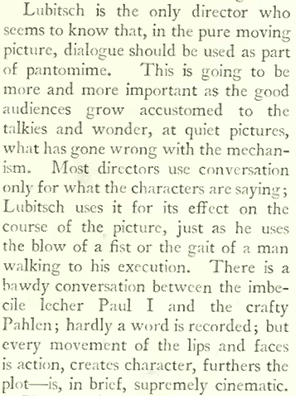Modernism in interior design gained a wider audience in the 1920s thanks in part to a series of major exhibitions sponsored by some of New York City’s leading department stores.

Although The New Yorker continued to feature advertisements for traditional styles of furniture, such as this one from the Sept. 22, 1928 issue…
…it was clear that the appetites of the city’s younger “smart set” were being whetted by retailers such as Macy’s, who in May 1927 hosted an “Exposition of Art in Trade” that included 100 exhibitors of modern European and American silver, pottery, books, textiles and furniture. The following spring Macy’s hosted the “International Exposition of Art in Industry,” where more than 250,000 visitors saw the work of more than 300 exhibitors from six countries. (This blog’s opening photo features a 1928 sideboard by Kem Weber, one of the exhibitors at Macy’s 1928 show. Photo courtesy Cooper Hewitt Collection).

Macy’s inspired other exhibitions by such retailers as Wanamaker’s, Abraham & Straus, Frederick Loeser, Lord & Taylor, and B. Altman & Co., which advertised its “20th Century Taste in the New Expression of the Arts in Home Furnishings” in the Sept. 29, 1928 issue of The New Yorker:
Writer Bertram Bloch reviewed the exhibit in the Oct. 6 issue. Although he suggested that he had some “hard, cruel things” to say about the show, overall he believed it something not to be missed. Excerpts:


While on the topic of modern furniture, Ilonka Karasz, who painted a total of 186 New Yorker covers from 1924 to 1973, showcased her own furniture designs (along with other artists from the American Designers’ Gallery), at an exhibition the following month.

* * *
The Singing Fool
The New Yorker generally detested the introduction of sound in motion pictures, but for some reason didn’t mind it so much when Al Jolson opened his mouth. This time he followed up his blackface performance in The Jazz Singer with another blackface routine in The Singing Fool. E.B. White wrote about the film’s big opening in “The Talk of the Town”…
…and in the magazine’s film review section, yet more praise for Jolson, whose singing apparently compensated for the mediocre dialogue:


The Sept. 29 issue illustrates the dichotomy in how The New Yorker depicted African Americans in the 1920s. Blacks in the magazine’s cartoons and illustrations were often portrayed as exaggerated characters from minstrel shows. However, a serious artist like Paul Robeson received a much different treatment. Indeed, the magazine shamed the racism of a fictional character in Dorothy Parker’s short story “Arrangement in Black and White” (Oct. 8, 1927), in which a wealthy, white woman condescends to a black singer who might well have been modeled after Robeson. The journalist and author Mildred Gilman profiled Robeson in the very same issue that praised Jolson’s tired blackface routine. An excerpt, accompanied by a Hugo Gellert illustration:
Next Time Wear a Disguise
The newlywed Gene Tunney, newly retired from boxing, was spending some time in Europe, probably hoping to get a break from the adoring crowds back in the States. Upon entering a French café with his friend, the author Thornton Wilder, he soon discovered that adoring crowds awaited him on the other side of the pond, as related by The New Yorker’s Paris correspondent Janet “Genêt” Flanner:

* * *
From Our Advertisers
Although by 1928 Americans (and particularly New Yorkers) were flouting Prohibition laws, alcoholic beverages still could not be legally produced or marketed (except for “religious” or “medicinal” purposes). Advertisers, however, found clever ways to market non-alcoholic beverages like ginger ale with the allure of liquor or fine wine. But then again, few were actually drinking straight ginger ale…
And if you formerly grew grapes for winemaking, what’s preventing you from selling unpasteurized grape juice that remains free from fermentation “as long as the factory seal remains unbroken”…? Also, note the not-so-subtle cocktail shaker at the top left of the photo:
And for our cartoons, Barbara Shermund explored the modern ways of love…
…while Peter Arno continued probing the comic imbalance of rich old men and their young mistresses…
Next Time: A Bird’s Eye View…







































































